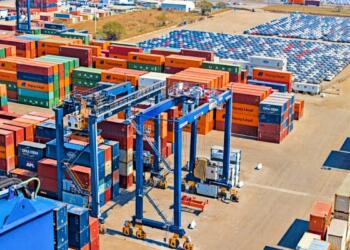
In a scenario in which Mexico has established itself as the main commercial partner of the United States , in addition to being the ninth exporting power in the world and number 13 in imports, the need to adopt technological solutions to face challenges and opportunities such as nearshoring becomes evident .
The second edition of the TradeHub Customs & Trade Innovation Summit, organized by the Confederation of Customs Agents Associations of the Mexican Republic (CAAAREM) , kicked off this Wednesday. It is a space that aims to present the main trends and tools that companies can apply to prepare for the future.
“We are immersed in a high-impact technological revolution and the message is very clear: adapt or die, get on the bandwagon or get left behind. The world is changing at a speed never seen before, driven by technologies such as Artificial Intelligence,” said Marcel Joffroy González, director of the organizing committee.
In this context, Miguel Cos Nesbitt, president of CAAAREM, highlighted that in 2007 the National Autonomous University of Mexico (UNAM) stated that the country was 75 to 100 years behind in technological development .
Cos said that Mexico’s situation has not changed to date, and pointed out that it is ranked 54th in the World Digital Competence Ranking, 61st in the Frontier Technology Readiness Index, and 58th in the Global Innovation Index.
This highlights the lack of digital and technological skills and applications of technology, cybersecurity and communication technologies, according to Miguel Cos.
“The overall picture shows that we have not managed to develop a solid culture of innovation that is capable of meeting the challenges of the future,” he added.
In this regard, the president of CAAAREM highlighted that Mexican customs and foreign trade have been at the forefront of innovation, digitalization and technological development.
Along these lines, he pointed out that Mexican customs has changed since the introduction of NAFTA in 1994, integrating process automation until now, when the National Customs Agency of Mexico (ANAM) created the code for accepting customs declarations – a new project – as well as the Single Window for Foreign Trade, which began operating in 2011, while the United States Customs Office came into effect in 2016.
“Our country has the capacity to innovate its platform in trade, we were also pioneers worldwide in the implementation of the figure of the Authorized Economic Operator (AEO) and we faced the pandemic with automated customs that never stopped the flow of trade,” said Cos.
Comment and follow us on X: @jenna_GH_ / @GrupoT21















